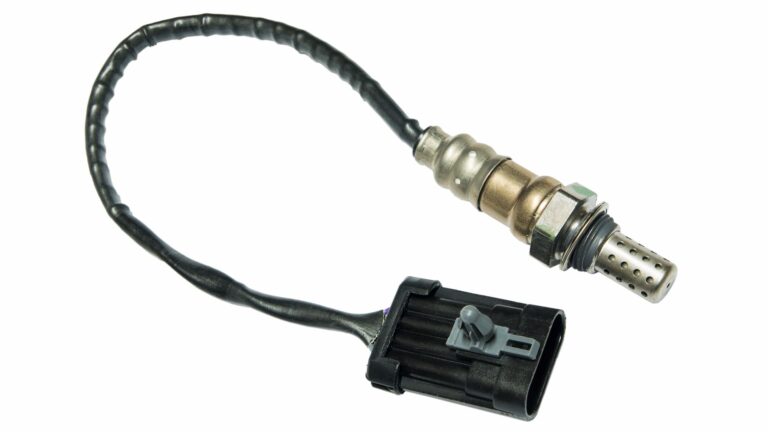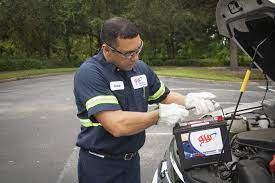Will Seafoam Clean a Catalytic Converter?

Seafoam is a well-known fuel system cleaner and is often used to clean out carbon deposits in various engine components. But when it comes to catalytic converters, you might wonder if Seafoam can help restore their function and performance. This article will explore the potential of Seafoam in cleaning catalytic converters and what you should know before using it.
What Is a Catalytic Converter?
A catalytic converter is a critical component of your vehicle’s exhaust system. Its job is to reduce harmful emissions by converting toxic gases like carbon monoxide, hydrocarbons, and nitrogen oxides into less harmful substances such as carbon dioxide and water. Over time, the catalytic converter can accumulate carbon deposits and become clogged, leading to reduced efficiency or even engine issues.
Can Seafoam Clean a Catalytic Converter?
Seafoam is designed to clean the fuel system, intake valves, combustion chambers, and the upper engine parts, which may help remove carbon build-up from some engine components. However, when it comes to cleaning a catalytic converter, Seafoam is not a guaranteed solution.
Why Seafoam Might Help
- Fuel System Cleaning: Seafoam works as a fuel additive that can clean carbon build-up in the combustion chamber and other parts of the engine. This could, in turn, help reduce the amount of carbon that flows into the catalytic converter.
- Fuel Injector Cleaner: It can also help clean the fuel injectors, which can prevent inefficient fuel combustion that could contribute to clogging the catalytic converter over time.
Why Seafoam Won’t Always Work
- Not Directly for Catalytic Converters: While Seafoam can clean various engine parts, it’s not specifically formulated to clean or fix a clogged catalytic converter. The product is designed more for the upper engine and fuel system components, not the exhaust system.
- Severe Clogging: If a catalytic converter is severely clogged or damaged, Seafoam may not be able to clear it. In these cases, replacement of the converter may be necessary.
How to Use Seafoam for Potential Catalytic Converter Cleaning
If you want to use Seafoam to potentially clean out some of the deposits that might be affecting your catalytic converter, here’s a basic guide:
- Add Seafoam to Your Gas Tank: Follow the instructions on the Seafoam can for how much to add to your gas tank. Generally, you can add 1 ounce of Seafoam per gallon of gas.
- Drive Your Vehicle: After adding Seafoam, drive your car as usual. This will allow the product to pass through the fuel system, intake, and combustion chambers, potentially cleaning out some of the carbon deposits that could eventually clog the catalytic converter.
- Use Seafoam in the Intake System: For additional cleaning, you can use Seafoam directly in the intake system by vacuuming it into the engine. This may help clean the intake valves and combustion chamber.
Important Note: If your catalytic converter is already clogged to the point of impacting performance, Seafoam may not solve the issue. It’s best to have the converter inspected by a mechanic.
Signs of a Clogged Catalytic Converter
If you suspect that your catalytic converter is clogged, here are some signs to look out for:
- Reduced Engine Performance: A clogged catalytic converter can cause poor acceleration, sluggishness, or a noticeable decrease in power.
- Rattling Noises: If the catalytic converter is damaged, it can make a rattling noise when you drive.
- Check Engine Light: A clogged or failing catalytic converter may trigger the check engine light, and a diagnostic code can pinpoint the issue.
- Increased Emissions: A damaged catalytic converter may result in higher emissions, leading to a failed emissions test.
What to Do If Seafoam Doesn’t Work?
If you try Seafoam and still experience poor performance or suspect a clogged catalytic converter, here are some options:
- Have the Catalytic Converter Inspected: A mechanic can diagnose the issue and determine whether cleaning or replacement is necessary.
- Consider Professional Cleaning: In some cases, catalytic converters can be cleaned using specialized tools and methods that remove carbon deposits.
- Replace the Catalytic Converter: If the catalytic converter is beyond cleaning or has failed, replacement might be the best option.
Frequently Asked Questions (FAQs)
1. Can Seafoam clean a clogged catalytic converter?
While Seafoam is effective at cleaning carbon deposits in certain engine components, it is not specifically designed to clean a clogged catalytic converter. If the converter is severely clogged, Seafoam may not resolve the issue.
2. How do I know if my catalytic converter is clogged?
Signs of a clogged catalytic converter include reduced engine performance, poor acceleration, a check engine light, and increased emissions. If you notice any of these symptoms, it’s best to have your catalytic converter checked by a mechanic.
3. Can Seafoam be used to clean a catalytic converter?
Seafoam may help with the general cleaning of engine components, which could indirectly prevent some deposits from reaching the catalytic converter. However, it’s not a direct solution for a clogged converter.
4. What should I do if Seafoam doesn’t fix my catalytic converter?
If Seafoam doesn’t improve your engine performance or fix your catalytic converter issues, it’s best to have your car inspected by a mechanic. They can check the converter’s condition and suggest whether cleaning or replacement is necessary.
Conclusion
Seafoam can potentially help clean carbon deposits from various engine parts, which might reduce the load on the catalytic converter. However, it is not a guaranteed solution for cleaning or repairing a clogged catalytic converter. If your catalytic converter is seriously damaged or clogged, a professional cleaning or replacement may be required. Always consult a mechanic if you suspect issues with your catalytic converter to ensure proper repair or maintenance.
Also Check:
• Will Seafoam Unclog a Catalytic Converter?
• Does CRC Guaranteed To Pass Really Work?
• Will Driving with a Bad Catalytic Converter Damage My Car?





